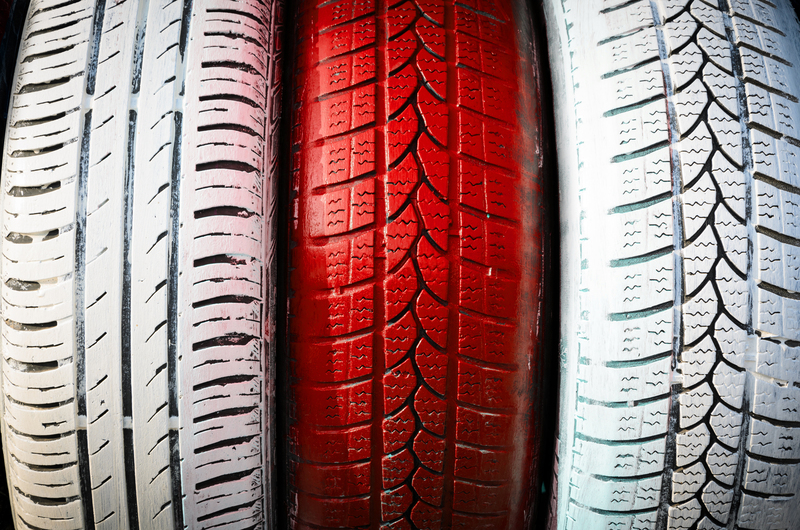Sustaining Minimalism: Tips for Ongoing Clutter Control
Minimalism isn't just a trend--it's a transformative lifestyle that promises less stress, more focus, and an uncluttered, peaceful environment. But the real challenge many face is not just in achieving minimalism, but in sustaining minimalist living over time. In this extensive guide, we reveal practical advice and comprehensive strategies for ongoing clutter control to help you maintain a serene and intentional minimalist home.

Why Minimalism Needs Maintenance
After the initial excitement of decluttering, old habits and new purchases can quickly sabotage your efforts. Life changes, seasonal items accumulate, and before you know it, your minimalist space starts to feel crowded again. This is why understanding sustaining minimalism is crucial to enjoying long-term benefits.
- Clutter creep is real: items pile up quietly.
- Intentional ownership requires regular reevaluation.
- Emotional attachment to things can resurface, tempting you back into clutter.
The good news? With the right tools and mindset, you can keep your home uncluttered and your life simplified.
The Importance of Ongoing Clutter Control
Consistent clutter management is key to maintaining a minimalist home. Regularly editing your possessions helps prevent the accumulation of unnecessary items, ensuring your living space remains refreshing, functional, and in harmony with your values.
Benefits of Sustaining Minimalism
- Reduces stress and anxiety: A calm, organized environment helps clear your mind.
- Boosts productivity: Less visual clutter means fewer distractions.
- Saves money: By not purchasing unnecessary items, you keep expenses in check.
- Fosters environmental responsibility: Minimalist habits cut down on waste and overconsumption.
Effective Tips for Ongoing Minimalism and Clutter Control
Let's dive into some actionable strategies that can help you sustain your minimalist lifestyle and keep your home perpetually clutter-free.
1. Implement a "One-In, One-Out" Rule
Every time you bring something new into your home, commit to removing a similar item. This cardinal rule of ongoing clutter control ensures your possessions don't balloon over time.
- If you buy a new shirt, donate an old one.
- Upgrade your phone? Give away or recycle the previous model.
Why it works: This habit immediately counteracts accumulation and enforces intentionality with purchases.
2. Schedule Regular Decluttering Sessions
Minimalist living isn't a one-time sprint--it's a marathon. Block out time each month or season to review different areas of your home.
- Monthly: Quick walk-throughs to catch out-of-place items.
- Quarterly: Tackle closets, the kitchen, or storage spaces.
Tip: Set a calendar reminder so this important habit doesn't slip through the cracks!
3. Keep Flat Surfaces Clear
Countertops, tables, and desks often become clutter magnets. Make it a rule to clear all flat surfaces at the end of every day. You'll be amazed at how much tidier your space feels.
4. Embrace the Sentimental Shift
Sentimental items present a unique challenge to sustaining minimalism. Instead of keeping everything, be selective and creative:
- Photograph momentos before letting them go.
- Dedicate a small memory box to truly special keepsakes.
Focus on cherishing memories--not material possessions.
5. Evaluate Purchases with Intention
Shop with purpose. Before buying anything, ask yourself:
- "Do I truly need this, or does it duplicate what I already have?"
- "Is this object aligned with my values?"
- "Where will I store this item?"
Intentional buying naturally supports ongoing clutter management.
6. Designate a Donation Basket
Keep a basket or box somewhere easily accessible. As you notice unused or unloved items, drop them inside. Once it's full, schedule a donation run. This makes clutter removal a continuous, stress-free process.
7. Practice Gratitude for What You Have
Shifting your mindset to gratitude fosters contentment and curbs the urge for unnecessary accumulation. Reflect on and appreciate the functionality and beauty of what you already own--an essential tenet of sustaining the minimalist lifestyle.
8. Set Clear Boundaries for Incoming Items
- Politely decline free promotional items if you don't need them.
- Limit subscriptions, magazines, and catalogs that pile up.
- Set a "no junk drawer" rule to avoid hidden messes.
Strong boundaries uphold your commitment to simplicity.
9. Consistently Edit Spaces
View your home as a living, evolving space. Regular editing prevents stagnation and fosters a sharper sense of what you truly value. Apply this to every area, from kitchens to closets.
10. Share the Journey with Others
Accountability is powerful. Involve your household or join online minimalist communities for support, ideas, and motivation.
- Host "declutter challenges" with friends.
- Share progress and tips on social media for ongoing inspiration.
Room-by-Room Ongoing Minimalism Strategies
Let's break down practical clutter control approaches for different areas of your home, ensuring you can maintain minimalism everywhere.
Minimalist Living Room
- Choose multi-purpose furniture with hidden storage.
- Keep decor simple--think framed art or a single vase.
- End each day by resetting the space to "zero" (putting everything back in place).
Minimalist Kitchen
- Limit gadgets--only keep what you use weekly.
- Do a fridge and pantry check every grocery day for expired or unused items.
- Decant staples into matching containers for a cohesive, clean look.
Minimalist Bedroom
- Rotate seasonal clothing and store off-season items out of sight.
- Protect "nightstand real estate;" only allow essentials like a lamp and book.
- Use under-bed bins for streamlined storage if needed.
Minimalist Bathroom
- Dispose of expired cosmetics and sample-sized toiletries monthly.
- Contain items in baskets or trays to reduce visual clutter.
- Opt for air-drying racks over accumulating excess towels.
Minimalist Entryway
- Install hooks for daily essentials (bags, keys, jackets).
- Keep a small shoe rack or tray and limit pairs to what you wear frequently.
- Resist turning the entry into a "catch-all" spot.
How to Maintain Your Minimalist Mindset
The physical act of decluttering is only half the battle--mental minimalism is equally essential to ongoing clutter control.
Practice Mindful Consumption
Learn to differentiate between "needs" and "wants" before bringing new items into your life. Ask whether each acquisition enriches your life or merely adds to the burden of maintenance.
Develop New Daily Routines
- Morning: Make your bed and put clothes away immediately.
- Evening: Do a quick "reset" by tidying up living areas.
Reflect and Adjust Regularly
Minimalism isn't static. Regularly reflect on your habits and surroundings to identify new sources of clutter or shifts in your needs. Fine-tuning your approach ensures your efforts remain effective and sustainable.
Common Challenges in Ongoing Minimalism--And How to Overcome Them
1. Guilt Over Letting Go
Many people hold onto items out of guilt--gifts from loved ones or expensive purchases. Remember, releasing objects doesn't diminish memories or relationships. You're honoring your journey by creating space for what truly serves you.
2. The "Just-in-Case" Trap
What if I need this someday? While it's natural to want to prepare for the future, this thinking often leads to clutter. Set a time limit: if you haven't used the item in a year, it's likely safe to let it go.
3. Unexpected Life Events
Moves, new family members, or changes at work can throw organization off balance. Use these times as opportunities to reevaluate and recommit to your minimalist goals.
Tools and Resources for Sustaining Minimalism
- Minimalist checklists: Keep a printed checklist for each room.
- Donation tracking apps: Record what you've given away and how it improved your space.
- Books and podcasts: Stay inspired with minimalist literature and audio advice.
- Label makers and storage bins: Maintain order and easy access without visual mess.
Leverage these tools to automate and simplify sustainable clutter control efforts.

Minimalism Is a Journey--Not a Destination
Sustaining a minimalist lifestyle requires ongoing intention, self-awareness, and flexibility. As your life evolves, so too will your relationship with your belongings. The strategies outlined above will help you preserve the clarity and calm you've worked so hard to achieve, making minimalism not just a phase, but a rewarding way of life.
Embrace the journey, tweak your routines, and enjoy the liberation of living with less. Your ongoing clutter control efforts will pay dividends in peace, space, and lasting contentment.
Conclusion: Living with Less, Gaining So Much More
Minimalism is not about deprivation--it's about mindful living. By staying proactive and using these ongoing clutter management tips, you can enjoy lasting freedom from chaos and rediscover what's truly important. Start today, and experience the extraordinary benefits of maintaining minimalism every single day.